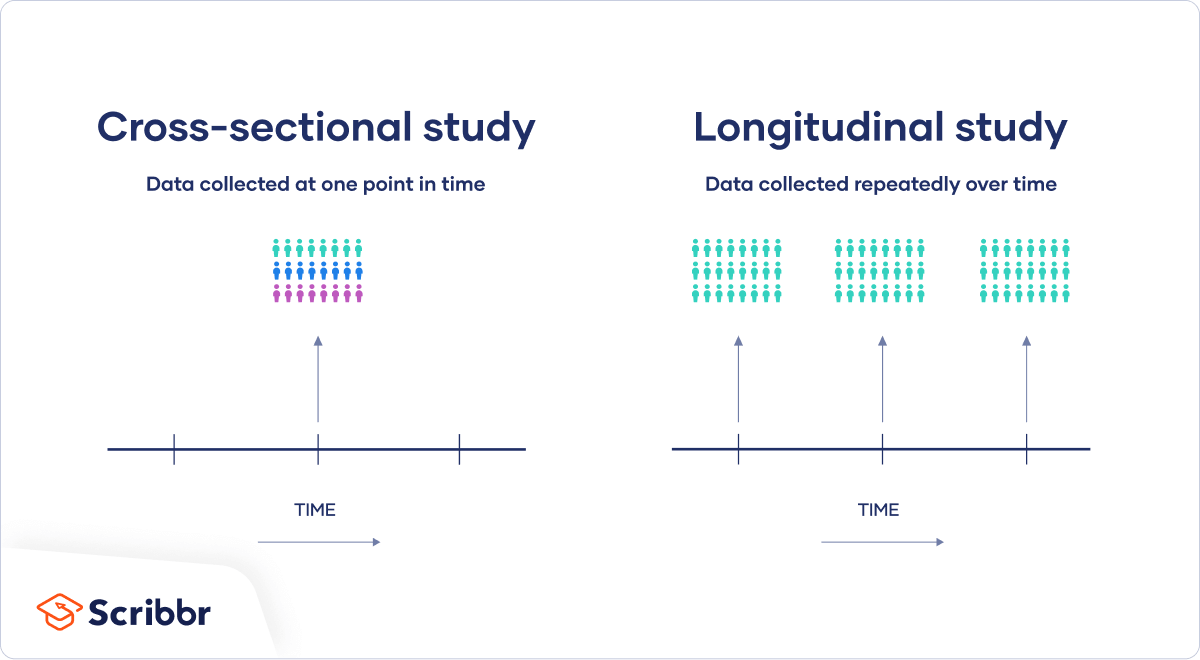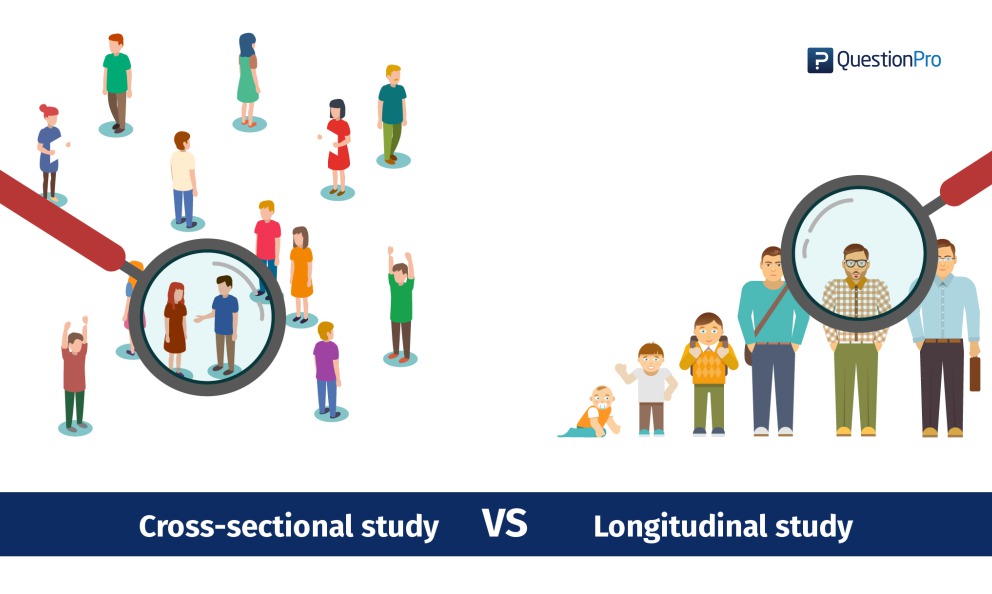Table Of Content

Each poll, in this case, would be considered an individual cross-sectional study with the data recorded describing preferences at each particular point in time. In this article, we’ll be focusing on cross-sectional designs, exploring the types of research questions and topics they’re useful for addressing, the characteristics, benefits and weaknesses of the approach, and giving you some handy tips on how to use them. For instance, an analytical cross-sectional study might investigate the relationship between lifestyle choices and blood pressure levels across various age groups. While these studies can suggest associations, they do not establish cause and effect. By understanding the different types of cross-sectional studies, researchers can select the most appropriate design to obtain reliable and relevant data. Below are four common types of cross-sectional studies, each with its unique focus and application.
They Provide Data on Multiple Variables
For example, educators studying students’ attitudes toward virtual learning may select groups of students of differing ages and ask questions about online learning at a specific point in time. In doing so, any differences in attitudes about this type of learning can presumably be attributed to age, rather than something that occurred over time. Nursing students’ academic stress and learning approaches are essential to planning for effective and efficient learning. Nursing education also aims to develop knowledgeable and competent students with problem-solving and critical-thinking skills.

How to Draw House Cross Sections
Both the PPS and the patients’ antibiotic history records from the laboratory registers revealed frequent use of antibiotics classes including cephalosporins, tetracyclines and penicillins. Such findings are in consistent with other studies conducted in South Africa and Uganda [21, 22]. Overall, the resistant pattern of such antibiotics has shown to be considerably high in Malawi based on previous studies and current national AMR reports [10, 11, 15]. Shortage of antibiotics as well as unrevised guidelines partly contribute to irrational use of antibiotics in health care facilities in Malawi and sub-Saharan region [10, 20, 22]. Often times, empirical antibiotic prescriptions are made without any microbiological indication as most healthcare facilities do have limited diagnostic capacity. Indiscriminate use of broad spectrum antibiotics leads to extremely high healthcare costs due to an increase in hospital admissions and drug usage [4].
Prompts further study
Researchers are able to look at numerous characteristics (ie, age, gender, ethnicity, and education level) in one study. For example, a cross-sectional study could be used to investigate whether exposure to certain factors, such as overeating, might correlate to particular outcomes, such as obesity. In epidemiology and public health research, cross-sectional studies are used to assess exposure (cause) and disease (effect) and compare the rates of diseases and symptoms of an exposed group with an unexposed group.
Asian population, according to a Pew Research Center analysis of the 2021 American Community Survey. A research project was conducted at Alexandria Nursing College, situated in Egypt. The college adheres to the national standards for nursing education and functions under the jurisdiction of the Egyptian Ministry of Higher Education.
Patterns of use and perceived value of social media for population health among population health stakeholders: a ... - BMC Public Health
Patterns of use and perceived value of social media for population health among population health stakeholders: a ....
Posted: Mon, 05 Jul 2021 07:00:00 GMT [source]
The simulation design seemed to induce learners to flow into the simulation, which increased their simulation educational satisfaction because they performed well once they engaged in the simulation activity. In nursing, simulation education has many advantages, such as improving nursing students’ problem-solving and judgment skills. Simulation education satisfaction is an indicator for evaluating educational performance from the learners’ perspective and an important criterion for the development and progress of nursing education. Therefore, based on NLN/Jeffries simulation theory, this study aims to identify the relationship between simulation design and educational satisfaction and to confirm the mediating effect of flow. Notwithstanding these drawbacks, the study substantially contributes to the expanding knowledge of academic stress and nursing students’ learning styles.
Cross-Sectional Design: Descriptive
The one chart you need to understand any health study - Vox.com
The one chart you need to understand any health study.
Posted: Mon, 05 Jan 2015 08:00:00 GMT [source]
The study’s limited generalizability to other people or nations stems from its concentration on this particular group. Another drawback is the dependence on self-reported metrics, which may contain biases and mistakes. Although the cross-sectional design offers a moment-in-time view of the problem, it cannot determine causation or evaluate changes over time. The calculations were based on specific parameters such as a population size of 9886 students for the academic year 2022–2023, an expected frequency of 50%, a maximum margin of error of 5%, and a confidence coefficient of 99.9%.
Cross-Sectional Study in Research
A retail company might use them to see shopping trends, while a health organization might look at common health issues in a community. By meticulously planning and executing each of these steps, you’ll be able to conduct a cross-sectional survey that not only gathers valuable data efficiently but also adheres to ethical and professional standards. Proper implementation is key to ensuring the reliability and validity of your survey results. Here, we’ll take a closer look at the process of designing an effective cross-sectional questionnaire and provide practical tips and considerations to help you create a well-structured and insightful questionnaire. It’s important to include questions that cover different aspects of the topic you’re researching.

PPS are snapshot audits across a whole hospital or selected wards, made at regular intervals to track trends and show the number of people taking antimicrobials at a given point in time. Another purpose of cross-sectional studies is to infer the nature and strength of relationships between variables. For example, if you’re interested in whether younger people who vape are more or less concerned about their health than older populations, you should gather variables capturing health concerns and age from a target population. You might then use a correlational analysis to determine whether health concerns rise or fall as the age of your respondents increases. A cross-sectional survey is a method researchers use to gather data from a group of people at one specific time. Unlike other methods, like longitudinal studies that track changes over time, cross-sectional surveys focus on the here and now.
Saul Mcleod, PhD., is a qualified psychology teacher with over 18 years of experience in further and higher education. He has been published in peer-reviewed journals, including the Journal of Clinical Psychology. For cross sections spanning the entire width or length of the house, start with the building envelope and work your way in. The drawing below shows section D-D shown on the floor plan from Step 1 "Choose a Cross Section Line". On the floor plan drawing above, at the upper and lower left there are two "A"s surrounded by circular icons with an arrow.
The expected frequencies are the frequencies that would be found if there was no relationship between the two variables. A confidence interval (CI) can be used to show within which interval the population's mean score will probably fall. By using a CI of 95%, researchers accept there is a 5% chance they have made the wrong decision in treatment. Therefore, if 0 falls within the agreed CI, it can be concluded that there is no significant difference between the two treatments. When 0 lies outside the CI, researchers will conclude that there is a statistically significant difference. Whether you’re building a marketing strategy or performing a cutting-edge medical study, you can get started by creating an intuitive survey from QuestionPro.
Another advantage of cross-sectional studies is their ability to collect data on multiple variables simultaneously. This not only saves time and money in data collection, but it also allows you to compare and contrast different data types within the same group of respondents. For serial cross-sectional surveys, investigators collect data in the same population over a specified period. For example, every three years, investigators repeat the body measurements among HIV patients to draw inferences about the patterns over time about obesity(Cummings, 2013). However, new samples are selected each time; therefore, each participant’s changes cannot be evaluated.
This method is really handy when researchers want to understand the current state of things, like how many people are using a new product or the general health of a community. For example, a healthcare study about whether a particular behavior may be connected to a particular illness provides clues that will serve as the basis for more in-depth follow-up surveys and studies. Researchers can use the results to gain approval on conducting additional research. A reporting guideline for cross-sectional studies is available for investigators and consumers of research to use. A reporting guideline’s primary goal is to ensure that published clinical research studies provide transparency in reporting a study’s conduct (what was done) and results.
Once the participants have been selected for the study, the investigator follows the study to assess the exposure and the outcomes. Cross-sectional designs are used for population-based surveys and to assess the prevalence of diseases in clinic-based samples. They may be conducted either before planning a cohort study or a baseline in a cohort study. These types of designs will give us information about the prevalence of outcomes or exposures; this information will be useful for designing the cohort study. However, since this is a 1-time measurement of exposure and outcome, it is difficult to derive causal relationships from cross-sectional analysis.
Data records for AST were collected from microbiology electronic register retrospectively, covering the period of 2019 to May, 2023. Cross-sectional studies capture data at a one-time point, while longitudinal studies track the same individuals over an extended period to observe changes. All people have at least one variable in common – being related – and multiple variables they do not share. Typically, the type of analysis that is performed when using a cross-sectional research design is a correlational analysis, which seeks to determine whether there is a relationship between two variables, and what the nature of that relationship is. For example, let’s say you’re interested in whether there is a relationship between concern with health and the amount of time spent vaping among users of vape products. Cross-sectional studies are what researchers call observational studies (as distinct from experimental type studies).

No comments:
Post a Comment